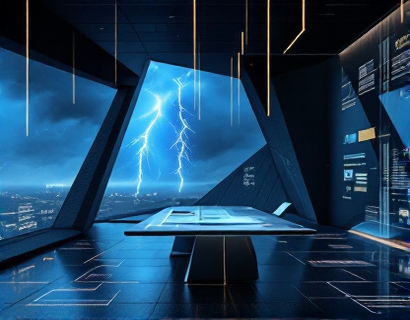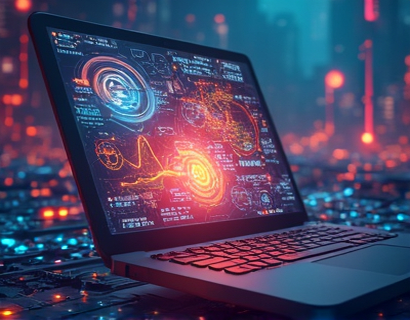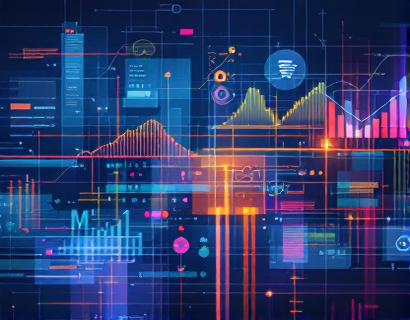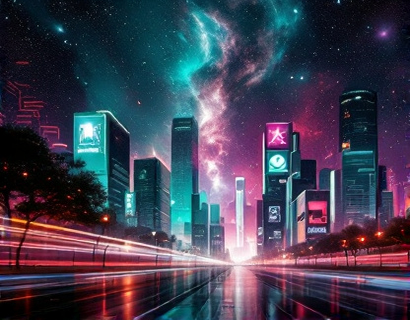NFTs: Revolutionizing Digital Ownership for Creators and Collectors in the New Era of Digital Innovation
The advent of Non-Fungible Tokens, or NFTs, has marked a significant turning point in the digital world, particularly for creators and collectors. This innovative technology is redefining concepts of digital ownership, scarcity, and value, offering unprecedented opportunities in the realm of digital assets. As we delve into this transformative era, it's essential to understand how NFTs are reshaping the landscape for digital creators and collectors, and the profound impact this has on the future of digital innovation.
Understanding NFTs
At their core, NFTs are unique digital assets stored on a blockchain, a decentralized digital ledger that ensures transparency, security, and immutability. Unlike cryptocurrencies like Bitcoin or Ethereum, which are fungible and interchangeable, NFTs represent one-of-a-kind items, such as art, music, videos, and even virtual real estate. This uniqueness is what gives NFTs their value and makes them highly sought after by creators and collectors.
Digital Ownership and Scarcity
One of the most revolutionary aspects of NFTs is their ability to establish digital ownership and scarcity. In the traditional digital realm, copies of files can be made infinitely without losing quality, making it challenging to attribute ownership or assign value. NFTs change this by embedding metadata on the blockchain, which verifies the authenticity and ownership of a digital asset. This ensures that only one person can own a particular NFT, much like owning a physical piece of art or a rare collectible.
The concept of scarcity is crucial in creating value in the digital space. Limited edition NFTs, for instance, mimic the exclusivity of physical art collections, where only a certain number of pieces are created. This scarcity not only appeals to collectors but also incentivizes creators to produce unique content, knowing it will hold value in the market.
Empowering Creators
For digital creators, NFTs offer a new avenue to monetize their work and connect directly with their audience. Traditional platforms often take a significant portion of the revenue, leaving creators with a small fraction of the earnings. NFT marketplaces, however, allow creators to sell their digital assets directly to buyers, retaining a larger share of the profits. This direct connection also fosters a more authentic relationship between creators and their fans, as artists can share their creative processes and engage with their audience in meaningful ways.
Moreover, NFTs enable creators to implement smart contracts, which are self-executing contracts with the terms of the agreement directly written into code. These smart contracts can automate royalty payments whenever an NFT is resold, ensuring that creators continue to benefit from their work long after the initial sale. This feature is particularly beneficial for artists who want to ensure ongoing income from their creations.
Enhancing Collector Experiences
Collectors, on the other hand, gain access to a new frontier of unique digital items that were previously unattainable. NFTs allow collectors to own and showcase rare digital art, collectible items, and even virtual real estate within blockchain-based worlds. The verification of authenticity and ownership through blockchain technology provides collectors with peace of mind, knowing that their assets are secure and verifiable.
The community aspect of NFTs also enhances the collector experience. Online marketplaces and social platforms dedicated to NFTs create vibrant communities where collectors can share, trade, and discuss their assets. These communities often host events, auctions, and exhibitions, further enriching the collector's experience and providing additional opportunities to engage with like-minded individuals.
Innovative Platforms and Ecosystems
The rise of NFTs has led to the development of innovative platforms and ecosystems designed to support creators and collectors. These platforms offer a range of tools and services, from creating and minting NFTs to managing collections and engaging with the community. By providing a user-friendly interface and robust functionality, these platforms lower the barriers to entry, making it easier for newcomers to participate in the NFT space.
One key feature of these platforms is the integration of blockchain technology, which ensures the security and transparency of transactions. Users can easily buy, sell, and trade NFTs, with all transactions recorded on the blockchain for public verification. This transparency not only builds trust within the community but also attracts more participants, further driving the growth of the NFT market.
Challenges and Considerations
Despite the numerous benefits, the NFT space is not without its challenges. One of the primary concerns is the environmental impact of blockchain technology, particularly proof-of-work blockchains like Ethereum, which require significant computational power and energy. However, the industry is rapidly moving towards more sustainable solutions, such as proof-of-stake mechanisms, to mitigate these issues.
Another consideration is the regulatory landscape. As NFTs gain mainstream attention, governments and regulatory bodies are beginning to take notice, leading to increased scrutiny and potential changes in laws and regulations. Creators and collectors need to stay informed about these developments to navigate the legal aspects of NFT ownership and transactions.
Future Prospects
The future of NFTs looks promising, with ongoing innovations set to expand their applications and reach. Beyond art and collectibles, NFTs are finding use in various sectors, including gaming, real estate, and even identity verification. In gaming, for example, NFTs can represent unique in-game items or characters, creating new revenue streams for developers and players alike. In real estate, NFTs can tokenize property ownership, making it easier to buy, sell, and trade real estate assets.
The intersection of NFTs and virtual reality (VR) and augmented reality (AR) is also an exciting area of development. These technologies, combined with NFTs, can create immersive experiences where digital assets have tangible value and utility. Imagine owning a unique digital piece of art that can be displayed in a virtual gallery or a virtual real estate property that you can visit and interact with.
Conclusion
The emergence of NFTs represents a paradigm shift in how we perceive and interact with digital assets. By providing a framework for digital ownership and scarcity, NFTs are empowering creators and collectors in ways previously unimaginable. As the technology continues to evolve and mature, the potential applications and benefits will only grow, paving the way for a more dynamic and inclusive digital ecosystem. Whether you are a creator looking to monetize your digital work or a collector seeking unique digital treasures, the world of NFTs offers endless possibilities and opportunities to redefine your digital experience.










































